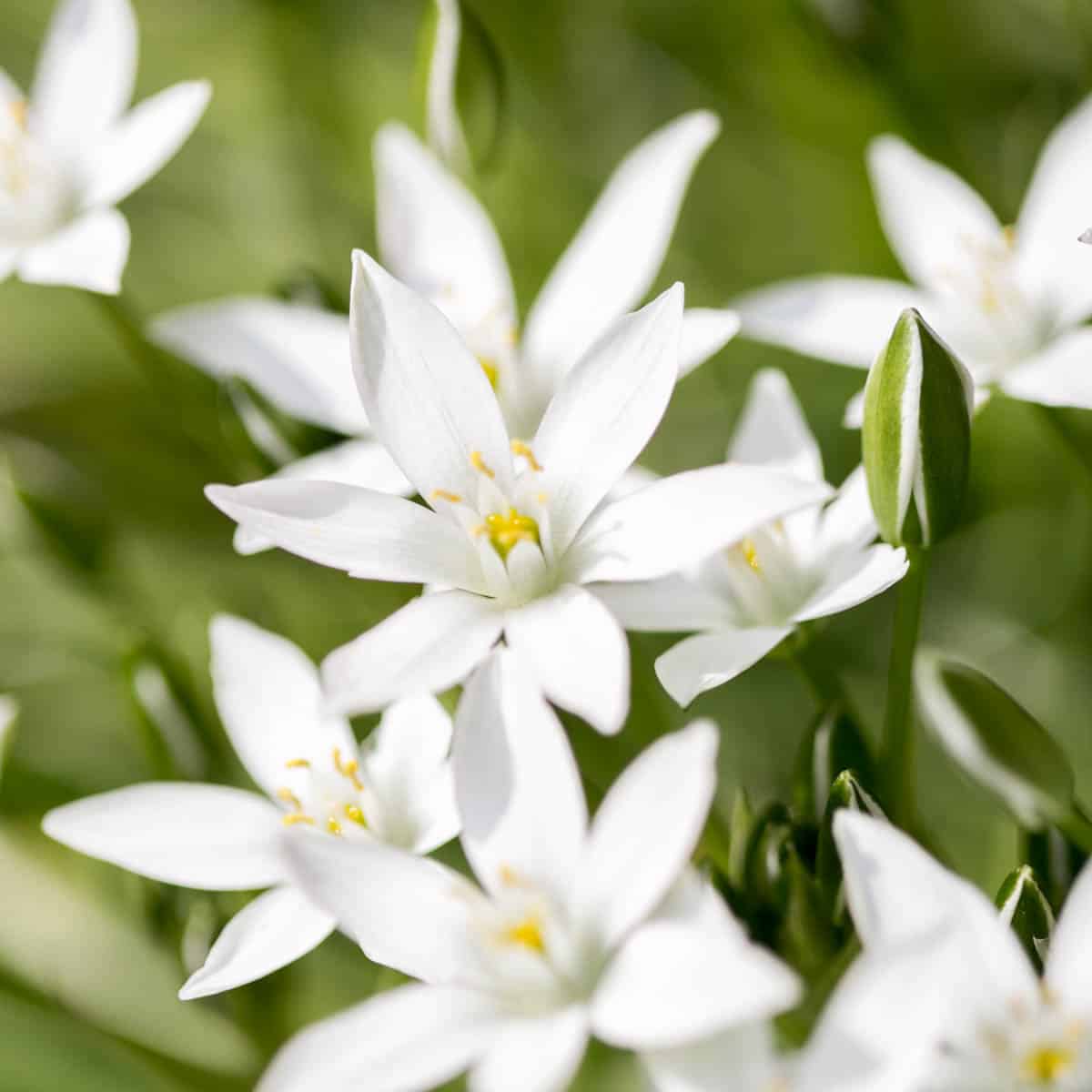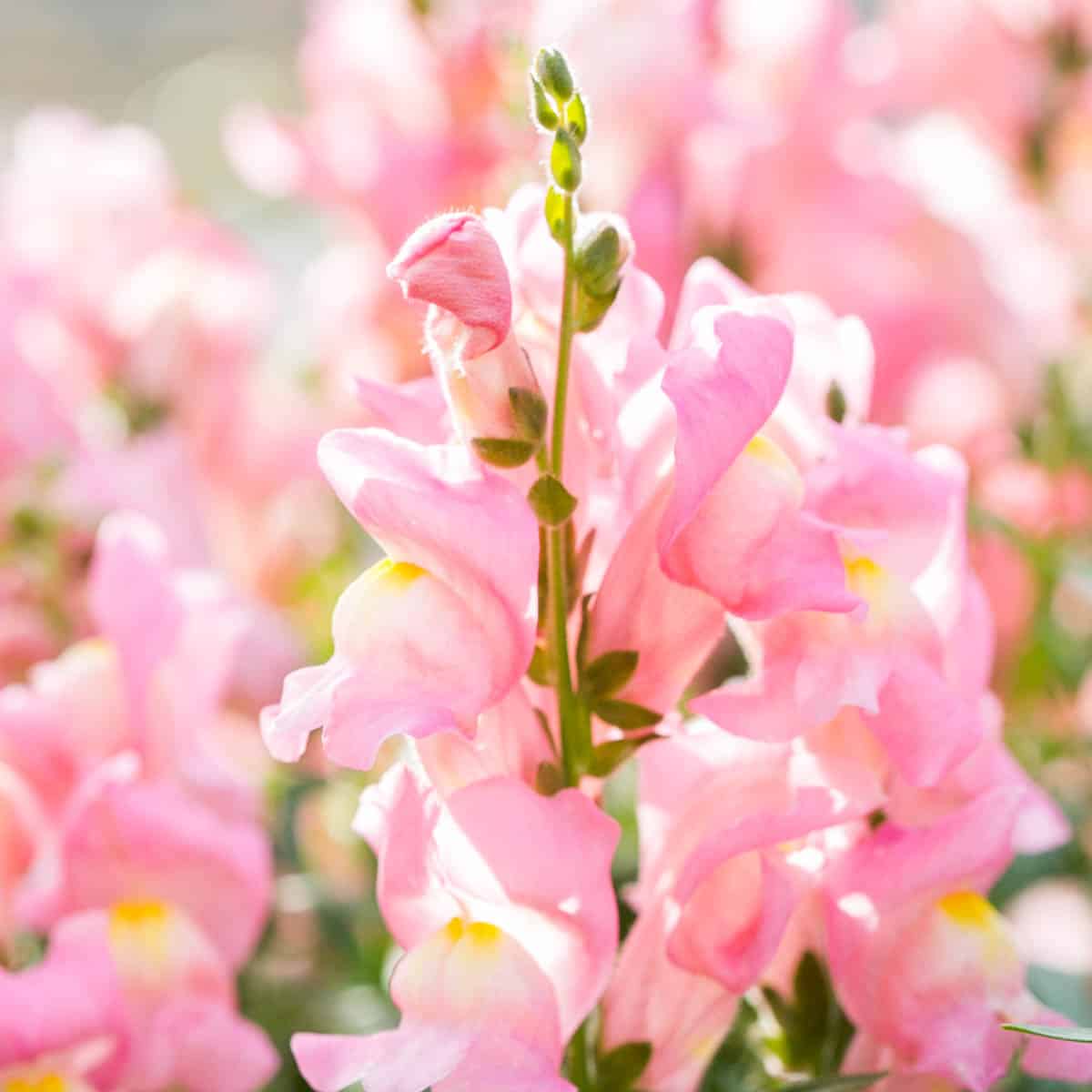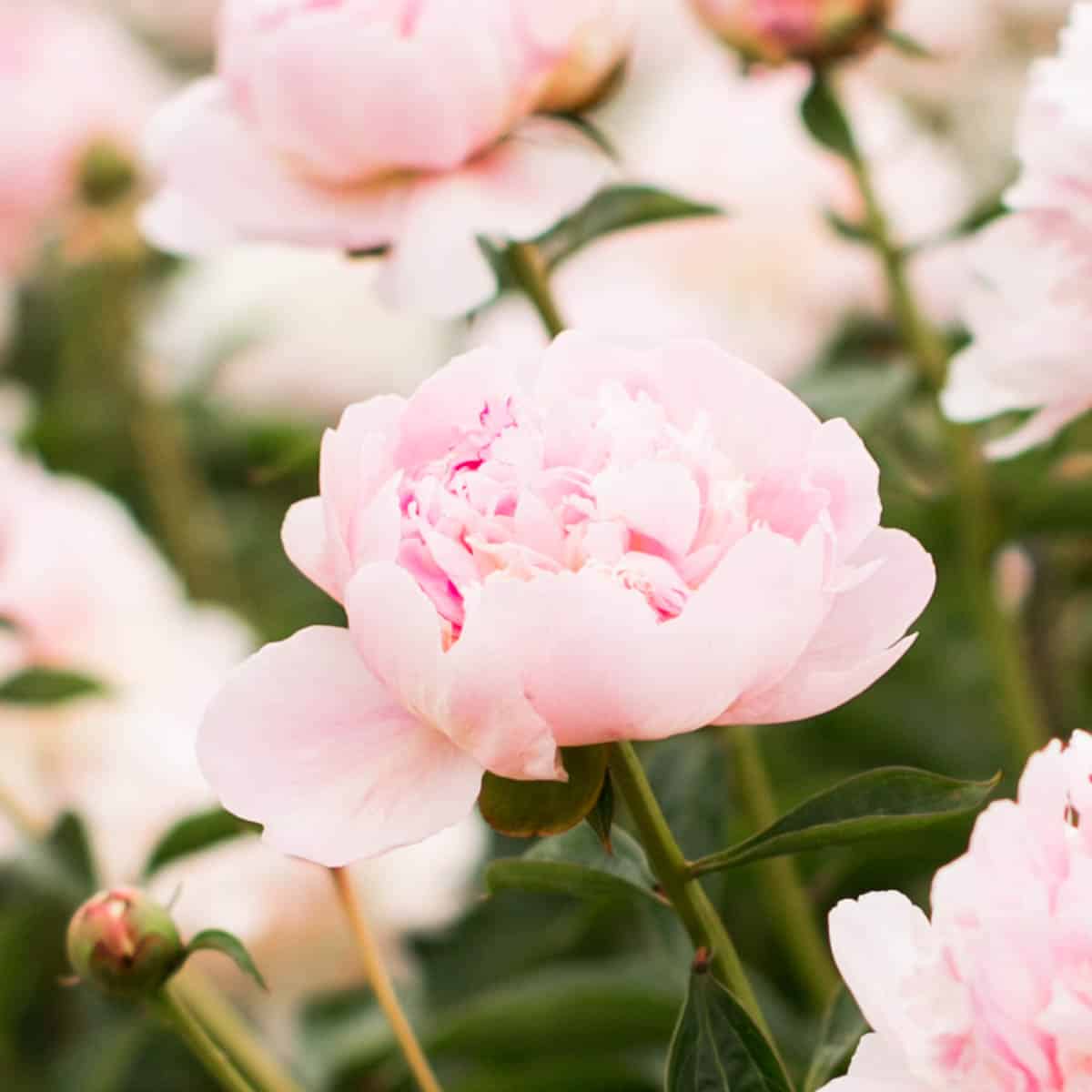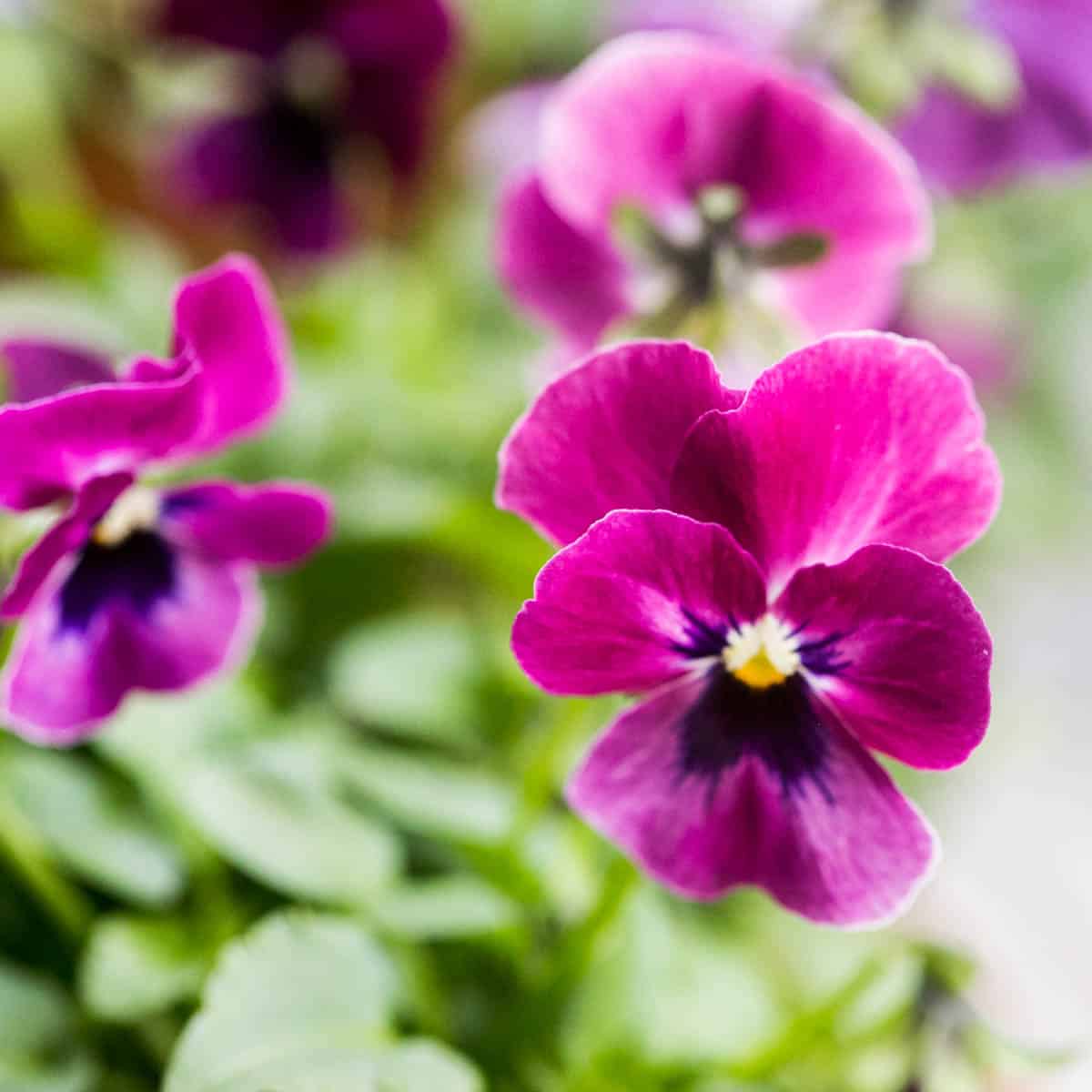Potted Sunflowers: The Best Grow + Care Guide!
This complete guide to potted sunflower care will help you grow gorgeous sunflowers right on your back porch!

Bright and beautiful, sunflowers are well known for their bold yellow hue. Because they attract bees and butterflies, they are often planted alongside vegetable gardens. But a lesser known secret is that sunflowers can also grow well in pots and containers!
Sunflowers happen to be very easy to grow in containers- they are the perfect easy growing flowers for kids! But they need to be given the right light, soil, and water to thrive!
This is the complete guide to growing sunflowers in pots and containers. We discuss the soil, light, fertilizer and container needs of your sunflower plants, giving you the best potted sunflower growing tips!
This post contains affiliate links. If you click through and make a purchase, we may make a small commission at no extra cost to you.
How To Care For Potted Sunflowers
Give potted sunflowers 6 to 8 hours of direct sunlight. They need a fertile, well draining growing medium. Make sure the size of the container is large enough to suit the variety of sunflower grown. Keep soil moist while seeds are growing.
When the plant is established water when the top few inches of soil are dry. Make sure there are drainage holes in the bottom of the pot (this step is crucial!).
Keep reading for all the details on growing sunflowers in pots!
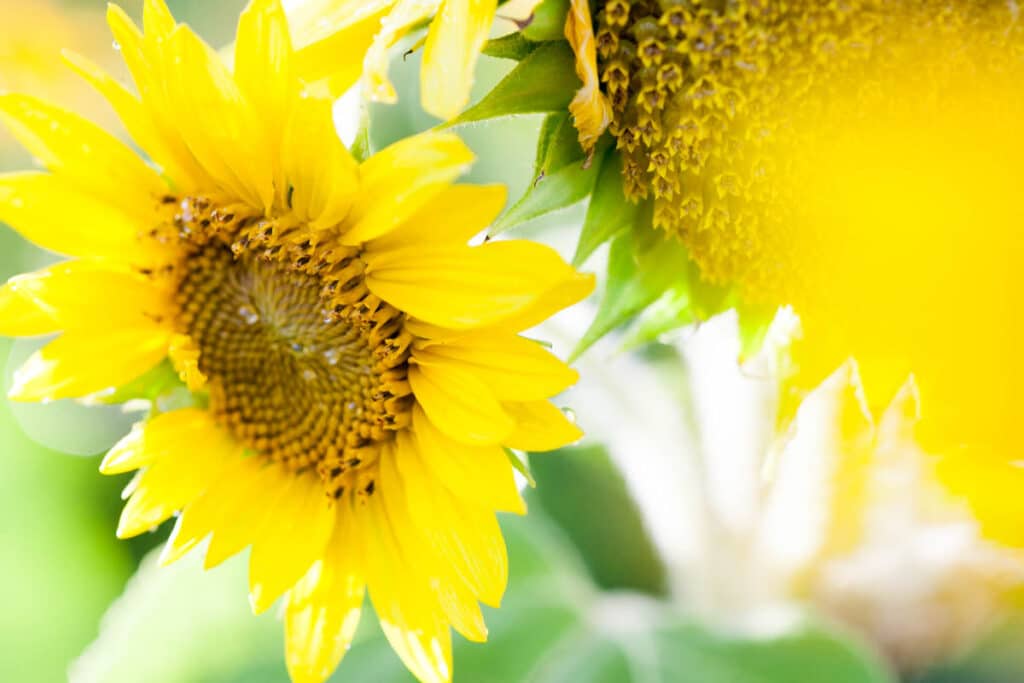
Sunflowers can be used as ornamental plants and for their edible seeds. Dwarf varieties do well in pots and containers, but larger sunflower varieties can grow in a larger pot, as well! This annual plant attracts bees and butterflies to the garden and is a great pollinating flower!
Sunflowers are one of the easiest flowers to grow and produce edible seed heads that birds love. Get more creative ideas for growing them here.
When To Plant Sunflowers In Pots
Sunflowers grown in pots can be started inside 3 to 4 weeks before the last frost (use a grow light to get a head start on the growing process!).
Or they can be planted outside from seed after the last frost date in your zone, typically in mid spring to early summer (depending on your hardiness zone).
A huge advantage of growing sunflowers in containers: if you have stormy late spring weather you can easily set your plants inside overnight to avoid a harsh frost!
Sunflowers can be purchased from garden centers and transferred to pots and containers as soon as the weather is warm and there is no risk of frost. (Check your USDA hardiness zone here!).
About sunflowers: Sunflowers thrive in full sun and feature flower heads of many different colors. Traditionally, they were used by Native Americans for food. There are many different types of sunflowers and they grow well in all parts of North America!
Learn how to grow snapdragons in pots here!
The Best Containers To Use For Potted Sunflowers
Grow sunflowers in plastic, concrete, wood and terracotta planters:
- Terracotta containers are porous and allow water and air to flow in and out of the soil within the pot. This helps prevent fungus like root rot developing in the roots of your sunflower plant. Terracotta can be subject to decay and breakage and should not be left out over winter. We love planting in terracotta for the ease of watering and the earthy aesthetic!
- Plastic containers: Plastic pots are commonly used for growing patio plants. A plastic pot is very durable and can withstand changes in temperatures. They are not porous and do not let air in and out.
- Concrete planters or pots can be a great choice for growing sunflowers. A large concrete planter, like the one shown, can grow small or large sunflowers. Concrete planters are very durable and can last for years and years.
- Wood planters- Wood planters can be a fine choice for growing sunflowers. Since they are typically light weight, they can be moved around the patio. This can be an advantage as light changes during the seasons.
We enjoy using terracotta or plastic pots for growing sunflowers. But almost any container can be a good choice… as long as there are drainage holes in the bottom and it is large enough for the variety of sunflower being grown.
Tip: If you don’t have good drainage holes in the bottom of the container, drill some! Good drainage is crucial to the survival of your potted sunflowers!
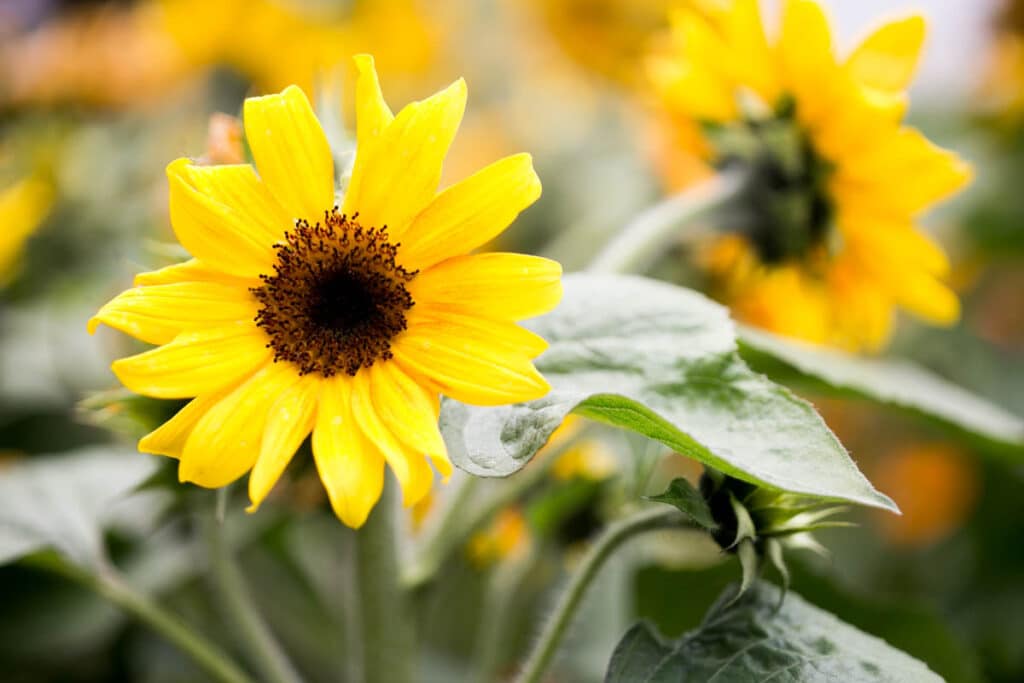
What Kind Of Soil Do Potted Sunflowers Like?
Sunflowers in pots and containers need soil that is well draining, full or organic matter, and slightly alkaline.
When grown in the ground sunflowers are not picky when it comes to soil type and can actually grow in a wide range of soils. (Except for muddy, water logged soil).
When growing sunflowers in pots and containers, however, you’ll need to make sure to provide well-draining soil that is fertile, or nutrient dense. A well-drained soil will prevent water build up in the roots of the plant. This will help you avoid root rot!
Look for a potting mix that has organic matter- or mix your potting soil with organic compost to help boost nutrients and add drainage!
Large sunflowers are heavy feeders, so we recommend using a fertilizer throughout the season to give the sunflower a boost. The large flowers on this plant need a healthy, rich soil in order to thrive. Smaller sunflower varieties typically do well with just a quality potting soil.
The best soil for sunflowers in pots and containers is fertile, well draining and slightly alkaline.
Tip: Add a layer of drainage material to the bottom of the pot to encourage good drainage. This can be as simple as a layer of pebbles.
A word to the wise: Do not use garden soil in your containers! It is too compact for containers and will not drain well.
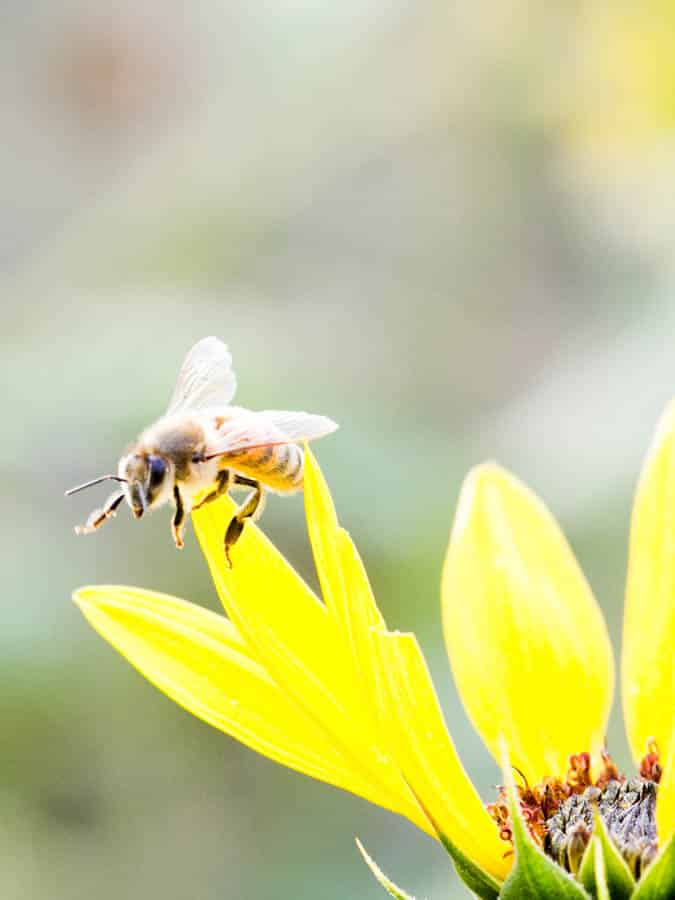
Learn how to properly water chrysanthemums here.
Best Varieties Of Sunflowers For Pots And Containers
Dwarf and miniature sunflowers are easiest to grow in a container. But larger sunflower varieties can grow in pots as well- just make sure to use a container large enough.
The size of the container should reflect the size of sunflower you are planting! Don’t plant a huge sunflower variety in a tiny container.
For smaller pots, plant miniature or dwarf cultivars. Larger sunflower varieties need large, deep containers.
Use care when matching your sunflower with a pot or container. Keep in mind that giant varieties grow a deep root system (featuring a tap root with lots of smaller side roots) and will need lots of soil. Smaller varieties can tolerate a shallower growing area- because their root system is not as deep!
(Learn more about the parts of sunflower here.)
If large sunflowers are planted in too small of a container they will topple over. So make sure they have the support they need for both their weight and root system!
Here are a few different varieties of sunflowers and the type of container needed:
Dwarf / Miniature Sunflowers
Growing less then 3 feet tall, dwarf sunflowers are adorable patio container flowers. They make excellent cut flowers as well! Dwarf sunflowers are easy container plants to grow. Feature them alongside lobelia or calibrachoa for a colorful statement on the patio.
Mini sunflowers come in various styles and heights, so be sure to read up on your specific variety before planting. You do not need a large container for dwarf sunflowers.
Some of our favorite dwarf sunflower varieties: Yellow Pygmy, Teddy Bear, Little Becka (which boasts a beautiful red-orange hue), and Elf, which only get 16 inches tall.
Branching Sunflowers
Branching sunflowers feature many different sunflower heads. With lots of vibrant color and multiple blooms, branching sunflowers make a huge impact on the back patio.
Use a container large enough for your branching sunflower variety. Some of these plants can grow to be 4 feet!
Sunfinity sunflower are some of the best branching sunflowers to grow.
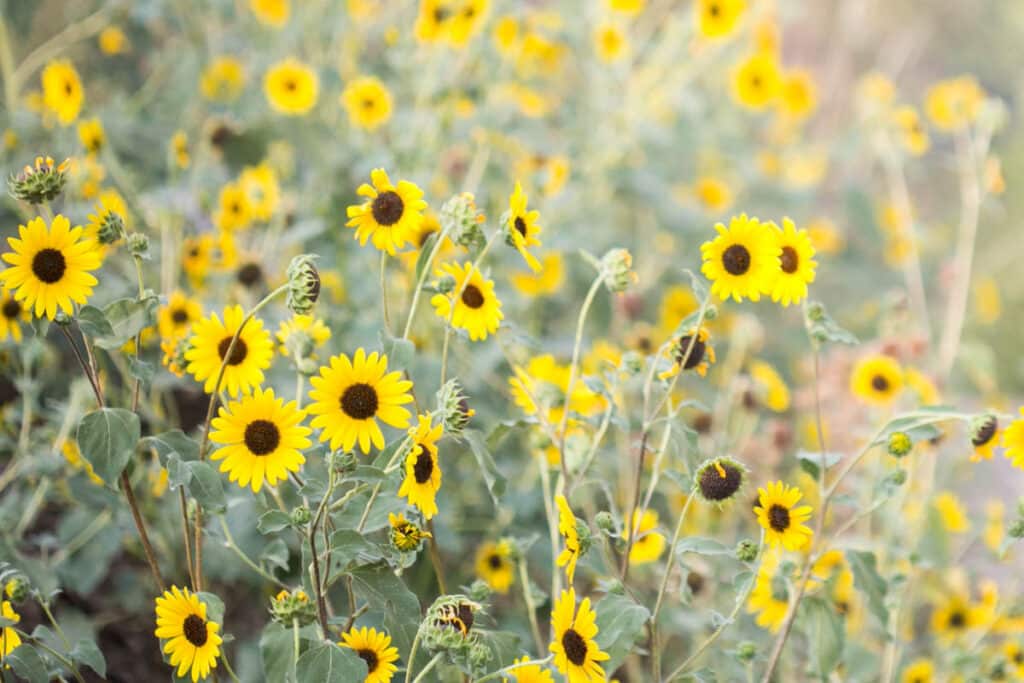
Giant Sunflowers
Giant cultivars such as Mammoth Sunflower can grow to be 16 feet tall! Make sure to use a very large container when growing to ensure your large plant is able to develop the wide root system it needs.
Look for a container size that will hold about 15 gallons of soil. Use a whiskey barrel, very large fabric container, raised bed, or concrete planter for these giant sunflower varieties.
Some of our favorite giant varieties are Russian Giant (growing to 10 feet tall), and Evening Summer.
The easiest sunflowers to grow on a small patio are dwarf or miniature sunflowers. This is because they are easy to manage and do not require a large container. If you’d like to try growing larger sunflowers, go for it! Just make sure the container is large enough to support your plant.
How To Plant Sunflower Seeds In Containers
Planting sunflower seeds in pots is very easy. Typically the planting instructions will be on the back of the seed packet, but if not just follow these steps.
To sow seeds directly into your container:
- Fill your container with a good quality soil and compost mixture
- Pre moisten the soil by watering deeply
- Place 2-3 sunflower seeds on top of soil and cover with 1/2 inch of soil. Pat down
- If desired place a plant label in your pot so you don’t forget sunflowers are in there!
- Continue to keep the soil moist during germination
- Once the seeds sprout, choose your strongest seedling. Cut the others at the base of the plant (do not pull up up the sunflower seedlings as this can disturb the roots of the other flowers)
Always water well with a gentle flow of water after planting to speed along the germination process, or pre moisten the soil.
We prefer to moisten the soil before planting the seeds. This prevents the seeds and soil from moving when watering. As the sunflower grows this is less of an issue, but you should still use a gentle stream of water on the young plant.
Learn how to plant zinnias in pots and containers here!
How Long Does It Take Seeds To Germinate In A Pot?
Sunflower seeds should germinate within 10-14 days with regular watering and 6 or more hours of direct sunlight. Temperature also plays a factor- the warmer it is the faster seeds will sprout!
The blooming season for sunflowers lasts from mid summer to early fall. Read more about the life cycle of sunflowers here.

Planting Sunflower Plants As Starts In Pots
These tips will help you transplant your own sunflower starts or sunflowers purchased from a garden center. To transfer a sunflower:
- Prepare the soil in your pot and ensure there is good drainage at the bottom of the container
- Gently remove the plant from it’s container
- If the roots look bound, gently loosen them up or score the roots
- Fill you container with potting soil and organic matter
- Did your hole twice as large as the sunflower start. Set your plant in to make sure it will be level with the soil line. Adjust soil as needed
- Back fill in the hole with soil and pat it firmly down
- Water your sunflower start
The best time to transplant a sunflower start is in the cooler temperatures of the early morning or late afternoon. Watering well after transplanting is a crucial step and will help your young sunflowers survive and develop strong roots.
The Best Place For Sunflowers In Pots
For best results, set your container of sunflowers in a very sunny and wind free location.
Strong winds can knock over sunflower plants, especially tall varieties. This can cause extensive damage and even breaking of the stems. Keep tall sunflowers protected by growing them in a sunny spot that has some shelter from wind.
Sunlight
Give your potted sunflowers at least 6-8 hours of sunlight daily in order to ensure that they thrive.
Sunflowers love lots of light and enjoy heat, which is why the thrive in the summer months!
This makes them a great addition to a warm and sunny patio. As their name suggests, sunflowers really do love sun, and if they don’t get enough they will not grow correctly.
If sunflowers do not get enough sunlight they may not produce as many blooms. They can turn a pale yellow or even white color. Their stems may start reaching for light, growing leggy and unattractive.
So be sure to place your potted sunflower in a location where it receives plenty of sunlight!
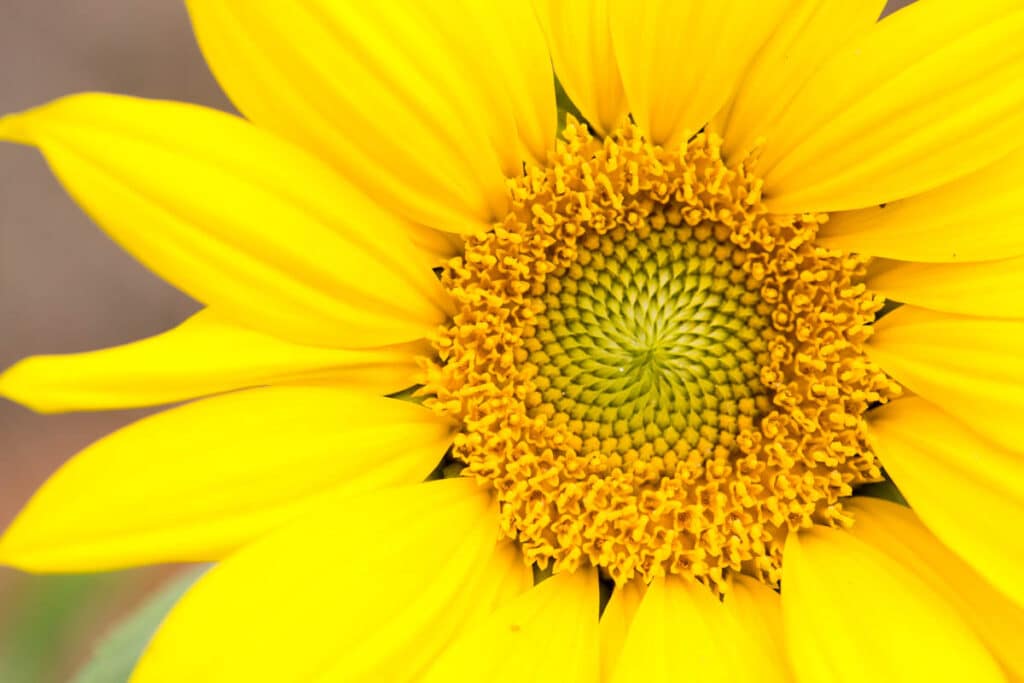
Water
Sunflowers in containers need more attention to their watering needs than sunflowers grown in the ground. This is because the water evaporates very quickly in containers during a hot summer! The smaller the container is, the more frequently you will need to check the water level.
Water daily when the weather is hot and dry.
During balmy, overcast and moderate weather, check the soil moisture before watering. If it is damp, skip watering! An easy way to do this is to stick your finger into the first few inches of soil to check for moisture.
Water in the early morning to avoid powdery mildew. Watering plants in the cool of the evening can lead to powdery mildew and other disease.
Remember, always make sure your container has drainage holes in the bottom! Good drainage is crucial for healthy sunflowers!
Fertilizer
Large sunflower varieties use a lot of nutrients and can benefit from slow-release fertilizers.
Dwarf varieties grow well in soil that is nutrient dense and do not need to be fertilized.
Learn all about wild sunflowers here!
Why Is My Potted Sunflower Dying?
Potted sunflowers can die if they are given too much water or do not receive enough sunlight.
If the container does not have good drainage the flowering plant can develop root rot. This can cause the plant’s roots to decay, which will eventually kill the sunflower plant.
If your potted sunflower is struggling, make sure that it is not being over watered. Check that it is getting at least 6-8 hours of sunlight and that the soil has great drainage.
FAQ’s On How To Care For Potted Sunflowers
Potted sunflowers need 6 to 8 hours of direct sunlight per day. If they do not receive enough light, sunflower leaves may become pale yellow or grayish in color. They may also become “leggy” which means they start to stretch toward the sunlight in an unnatural way. The plant will be weak and prone to disease.
So it’s a good idea to always keep your potted sunflower in a bright and sunny location!
Most sunflower varieties are grown as annuals. However there are some perennial varieties that can be grown and they come back each year. Jerusalem Artichoke is an example of perennial sunflowers that will return the following year.
Sunflowers can grow in many different types of containers such as terracotta, wood, cement or plastic. The most important thing is to give young plants good drainage, so make sure your container has holes in the bottom of the pot. Larger sunflower varieties will need a large, sturdy pot in order to thrive.
Final Thoughts
What could be better than a sunny summer porch filled with vibrant yellow sunflowers? Luckily, these gorgeous bloomers are easy to grow. First, choose a container that is large enough for the sunflower variety you are growing.
Then make sure to use a nutrient rich potting soil and amend it with compost for extra drainage and nutrients. Set your sunflowers in a sunny location (6-8 hours of light). Water when the soil is dry and enjoy your cheerful yellow sunflowers!
We hope you have a successful summer growing potted sunflowers. Let us know in the comments if you have any questions! Happy gardening!

